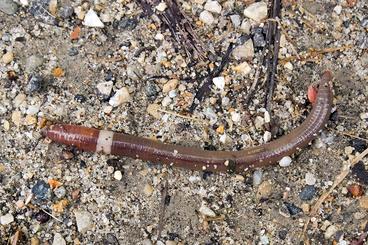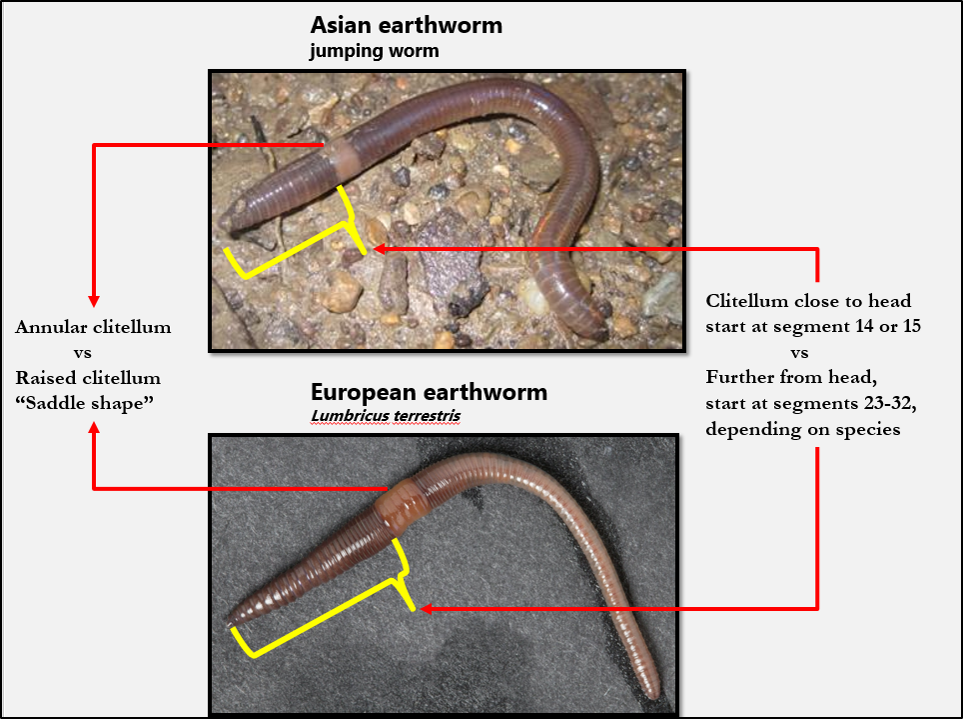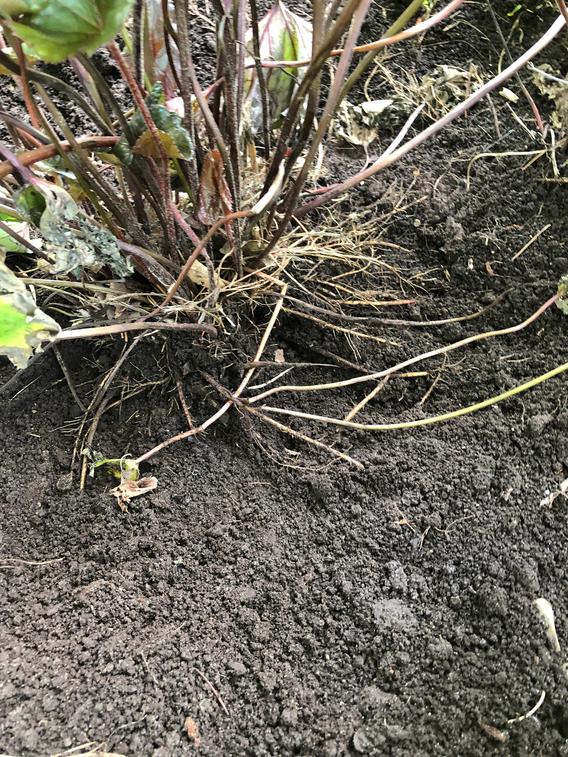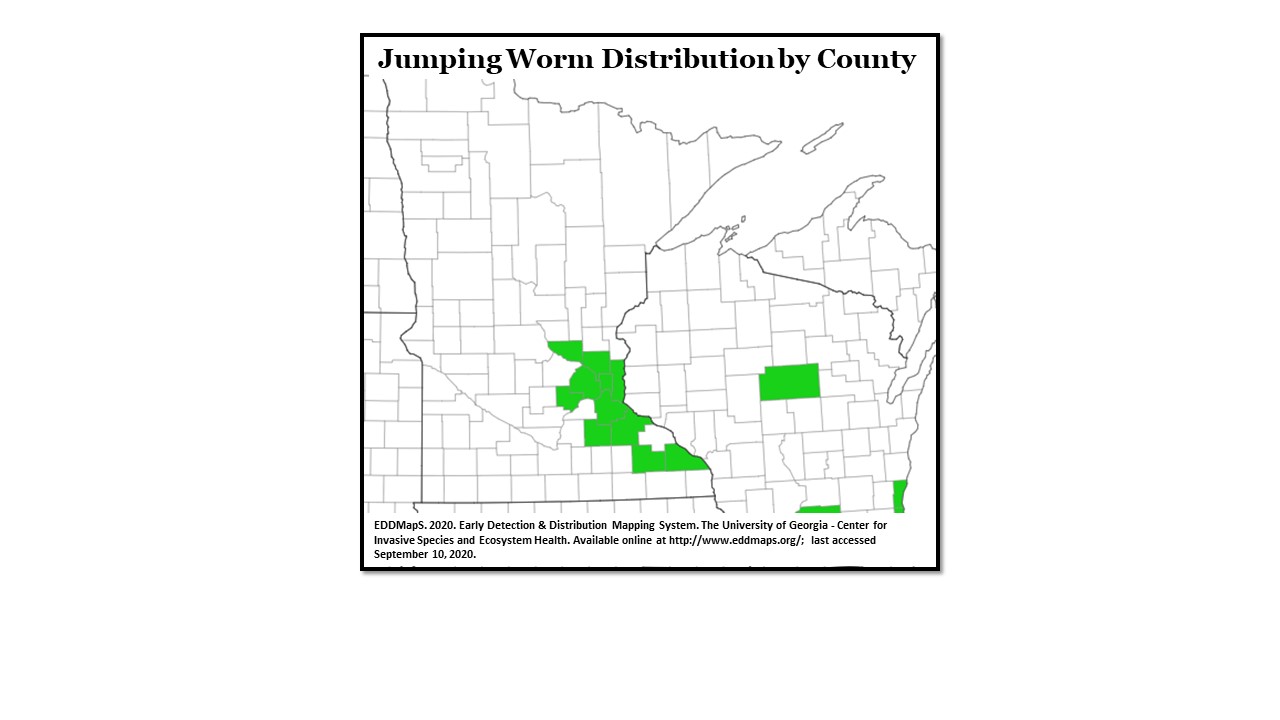Jumping worms...
IMPACT: Radically alters soil structure and chemistry
HABITAT: Garden beds, Mulch, Compost piles
SPREAD via: Composting, Horticulture, Landscaping, Bait
Identifying Characteristics
Pigmentation: The pigmentation of the worms acts as protection against UV rays. Earthworms that feed on or come to the surface are at risk of "sunburn" that can often be fatal. Worms will vary in pigmentation depending on their feeding and burrowing activities. Because jumping worms live and feed in the top few inches of soil they tend to have a dark pigmentation.
Clitellum: The clitellum or "ring" around an earthworm is the reproductive organ which lets us know that the earthworm is a sexually mature adult. The clitellum is located near the head of the worm. European species have a saddle shaped clitellum that swells up and does not wrap around the entire body. Jumping worms have an annular clitellum that is less swollen, and it wraps around the entire body.
Setae: Tiny hairs called setae are found around the earthworms body and help it move. European species have eight setae around each segment. The jumping worm has as many as 40 setae or more around each segment.
Movement: The European earthworms we are accustomed to move slowly. They inch their way forward using the setae on their body. Jumping worms have more setae which allow them to be in contact with more of the ground. They use these extra setae to move very sporadically and “un-worm-like”.
Castings: Castings are earthworm poop. European earthworms leave behind high nutrient castings that are great for garden fertilizer. Their castings look like fresh dirt in small clumps. Jumping worms do not offer the same support in the garden. Their castings are left near the surface and often wash away or erode. Jumping worm castings look and feel like coffee grounds.



